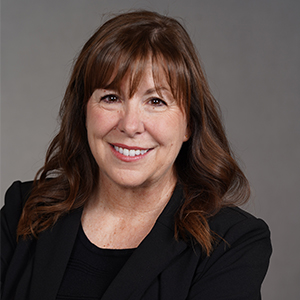Sarah Wheeler: In the past you said that technology isn’t a differentiator, it’s just an equalizer. Do you still think that?
Rich Weidel: Yes, and even more now that we’re seeing in this down cycle which technologies provide value and which are just an expense.
It wasn’t that long ago that technology was going to change everything. If you go and look at headlines from 2013-2014 — everything was revolution and transformation and technology was going to lower costs. You would get phone calls constantly from tech vendors during that period, and they’d talk about 30%, 40% ROI and how much tech would decrease turn times. And I think we saw an advantage among some of the first movers — these companies came out of the crisis and were able to take advantage of technology, that’s when they really started to grow.
Today, though, there’s almost zero differentiation. Within mortgage companies, even those that have huge scale versus small scale, they’re offering really the same borrower experience and the same loan officer experience. Obviously, they’ve got some different systems to handle hundreds of loans a month versus thousands or tens of thousands. But if you go and look at the financials, there’s no differentiation in terms of cost per loan or speed to close with any correlation that I’ve been able to see on technology spend.
So essentially, the two biggest promises of technology, that it would lower costs and increase speed, have not materialized in any way.
SW: How does that impact you as a mortgage lender CEO?
RW: A lot of vendor contracts are just killing mortgage companies right now, because they’re stuck in these multiyear contracts with minimum standards. That model just doesn’t work. You’re signing a contract in 2020-2021 when the industry is doing $3.5 trillion, and you have to commit to a multiyear contract with x number of seats or minimum units per month. At Princeton, we’ve always been very risk-averse, and that comes from my experience in commercial real estate and debt and leasing.
The second problem is that in a tightening margin environment, you could have per-unit vendor costs that are more than the revenue that you’re getting in. That means no matter how many loans you do, you can’t make money. So the technology that’s supposed to save you can also be the thing that drives the mortgage company into bankruptcy.
SW: How do you fix that?
RW: For 95% of mortgage companies, the answer is buy and integrate and optimize.
SW: How do you feel about your tech stack?
RW: We really like our tech stack. I don’t think there’s a huge amount of differentiation between vendors, and the shiny toy of today is typically not the shiny toy of tomorrow. That hot tech thing you had to have in 2018? Nobody’s talking about that anymore. And some of the vendors that were the darlings of 2021, raising all the money, they’ve now got all that venture capital and all that carried interest and all that expense load that they just can’t price. While some of your smaller vendors who were bootstrapped don’t have that cost structure and they can be more flexible in their pricing to meet the moment.
But you have to make sure of your counterparty risk with that vendor, because you don’t want to build your system around a technology partner that’s not going to be there in a year or two.
SW: We’re seeing a lot more repurchase requests, and some of those seem to be on minor loan defects. How should technology be helping there?
RW: Sometimes you have problems on loans that are due to technology — so a disclosure doesn’t fire right, or you’re not calculating the ARM interest correctly. Those can be catastrophic if it goes on for a long period of time. But typically, if the technology is causing an issue, if you’re doing your QC prefund correctly, you catch it on one or two loans and then you can correct the technology issue and it works.
The thing that the mortgage industry cannot correct for is human error, and there always is human error. And then on top of that, our industry is under attack from fraud from all sides. Because of that, I think we at Princeton do way more than is required by the agencies from a QC perspective on our prefund. We overinvest on the QC part.
SW: What part does tech play in attracting great LOs?
RW: You have to figure out your differentiated value proposition. There are a lot of good companies with a lot of good products with good rates with good fulfillment. If you’re going to grow in this business, you have to have that. Well, then what? If you study salespeople, in mortgage or any industry, the biggest things that hold salespeople back once they have good fulfillment rates and the basic stuff is an under investment in prospecting activities. Well, my experience is that where you can get the biggest lift with salespeople is actually in the technology and the automation around prospecting. So we built our sales machine around that.
We use technology, marketing and support systems to do some of that prospecting on behalf of loan originators and we’ve been slamming at that for like six or seven years now. And we keep in touch in a very dynamic, personalized way with referral partners and customers and we have a competitive advantage on that.
In Q3 our loan originators added on average 2.88 new referral partners. And that means the average loan originator at Princeton closed a loan in Q3 with 2.88 Realtors they’ve never worked with before. If you think about the lifetime value of the customer, well, you get a loan a quarter from each Realtor, three Realtors in a quarter, and they’re each good for four loans a year, that’s 12 loans. Average commission is $3,000. That’s $36,000 a year from just those three Realtors, plus the ones you add in other quarters. Now we’re talking about a $100,000 opportunity. Wow. If we were to invest in that differently, what would that look like?
In 2018, which was a difficult year, every phone call with a loan officer felt like they were talking about leads: leads, leads, leads. Nobody talks about leads anymore. Now it’s all rates.
SW: As the CEO of a lender in this environment, what keeps you up at night?
RW: I often think that my job is to try to make the best decisions that I can based on the facts that we have. What’s really difficult about this industry is we don’t know what volume or margins are going to be three, six, 12 months from now. It’s really hard to be prepared for what’s coming next so I think the question is: are you willing to react as the facts change to meet the moment? And that’s what we ask ourselves as a leadership team.
We used to do that monthly, but it was too short of a cycle, because you wind up overreacting on 30 days of data so we do it on a quarterly basis. We put a game plan together for three months and at the three-month review we ask: What were our predictions? Where did we land? What do we wish we would have done differently? And how do we want to adjust for the next three months or three quarters?
We make money on the up swings and lose money on the down swings, and when it’s stable, we just make average profits. Even if volume stays at the $1 trillion or $1.5 trillion level, the industry will be sized for it and it won’t be great, but it’ll be okay. We’re just still in the problem of there’s too much capacity. Everything needs to size back to the steady state.
SW: What’s the biggest lesson you’ve learned on technology?
RW: The lesson of technology, for us, has been that so much of the difference in technology is about the way that the people utilize it. So we talk not just about tech, but technology, people and process. Those three things added together will equal the result: It’s really a systems engineering question. And so much is it of it is the human capital of how you’re integrating those types of things.
I’m in some owners working groups, and somebody will bring up a tech and either they’re having great success and we’re struggling with it, or we’re having great success and they’re struggling with it. And you see that the same technology deployed in different cultures and with different processes sometimes works and sometimes doesn’t work. So you have to ask: Are we utilizing the technology to its fullest capacity? And is it a tech problem, a people problem, a process problem, or some combination of those three?
SW: Looking to the future, are you optimistic?
RW: I’m super optimistic about housing in America. We are in an industry that isn’t going anywhere. We’re also in an industry that’s relatively commoditized, so you can’t hate the game, you just have to know the game that you’re in.
Princeton is a company that’s been around for a long time, but we haven’t peaked. And so these market resets, while they’re terribly painful, are like forest fires — they have to happen to clear out all the overgrowth so there can be flourishing on the other side. Unfortunately, there’s a lot of pain during that process.






